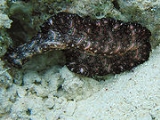
Flatworm
Overview
The flatworms, known in scientific literature as Platyhelminthes or Plathelminthes (from the Greek
πλατύ, platy, meaning "flat" and ἕλμινς (root: ἑλμινθ-), helminth-, meaning worm) are a phylum of relatively simple bilaterian, unsegmented
, soft-bodied invertebrate
animal
s. Unlike other bilaterians, they have no body cavity
, and no specialized circulatory
and respiratory
organ
s, which restricts them to flattened shapes that allow oxygen
and nutrients to pass through their bodies by diffusion
.
In traditional zoology texts Platyhelminthes are divided into Turbellaria
, which are mostly non-parasitic animals such as planarians, and three entirely parasitic groups: Cestoda
, Trematoda
and Monogenea
.
Greek language
Greek is an independent branch of the Indo-European family of languages. Native to the southern Balkans, it has the longest documented history of any Indo-European language, spanning 34 centuries of written records. Its writing system has been the Greek alphabet for the majority of its history;...
πλατύ, platy, meaning "flat" and ἕλμινς (root: ἑλμινθ-), helminth-, meaning worm) are a phylum of relatively simple bilaterian, unsegmented
Segmentation (biology)
Segmentation in biology refers to either a type of gastrointestinal motility or the division of some animal and plant body plans into a series of repetitive segments. This article will focus on the segmentation of animal body plans, specifically using the examples of the phyla Arthropoda,...
, soft-bodied invertebrate
Invertebrate
An invertebrate is an animal without a backbone. The group includes 97% of all animal species – all animals except those in the chordate subphylum Vertebrata .Invertebrates form a paraphyletic group...
animal
Animal
Animals are a major group of multicellular, eukaryotic organisms of the kingdom Animalia or Metazoa. Their body plan eventually becomes fixed as they develop, although some undergo a process of metamorphosis later on in their life. Most animals are motile, meaning they can move spontaneously and...
s. Unlike other bilaterians, they have no body cavity
Coelom
The coelom is a fluid-filled cavity formed within the mesoderm. Coeloms developed in triploblasts but were subsequently lost in several lineages. Loss of coelom is correlated with reduction in body size...
, and no specialized circulatory
Circulatory system
The circulatory system is an organ system that passes nutrients , gases, hormones, blood cells, etc...
and respiratory
Respiratory system
The respiratory system is the anatomical system of an organism that introduces respiratory gases to the interior and performs gas exchange. In humans and other mammals, the anatomical features of the respiratory system include airways, lungs, and the respiratory muscles...
organ
Organ (anatomy)
In biology, an organ is a collection of tissues joined in structural unit to serve a common function. Usually there is a main tissue and sporadic tissues . The main tissue is the one that is unique for the specific organ. For example, main tissue in the heart is the myocardium, while sporadic are...
s, which restricts them to flattened shapes that allow oxygen
Oxygen
Oxygen is the element with atomic number 8 and represented by the symbol O. Its name derives from the Greek roots ὀξύς and -γενής , because at the time of naming, it was mistakenly thought that all acids required oxygen in their composition...
and nutrients to pass through their bodies by diffusion
Diffusion
Molecular diffusion, often called simply diffusion, is the thermal motion of all particles at temperatures above absolute zero. The rate of this movement is a function of temperature, viscosity of the fluid and the size of the particles...
.
In traditional zoology texts Platyhelminthes are divided into Turbellaria
Turbellaria
The Turbellaria are one of the traditional sub-divisions of the phylum Platyhelminthes , and include all the sub-groups that are not exclusively parasitic. There are about 4,500 species, which range from to in length...
, which are mostly non-parasitic animals such as planarians, and three entirely parasitic groups: Cestoda
Cestoda
This article describes the flatworm. For the medical condition, see Tapeworm infection.Cestoda is the name given to a class of parasitic flatworms, commonly called tapeworms, of the phylum Platyhelminthes. Its members live in the digestive tract of vertebrates as adults, and often in the bodies...
, Trematoda
Trematoda
Trematoda is a class within the phylum Platyhelminthes that contains two groups of parasitic flatworms, commonly referred to as "flukes".-Taxonomy and biodiversity:...
and Monogenea
Monogenea
Monogenea are a group of largely ectoparasitic members of the flatworm phylum Platyhelminthes, class Monogenea.-Characteristics:Monogenea are very small parasitic flatworms mainly found on skin or gills of fish....
.
Unanswered Questions

